Pieter Claesz. Stilleben im Goldenen Zeitalter
22.04.2005 – 21.08.2005
Curated by Christian Klemm.
Location Moser-Bau (1. Stock).
Curated by Christian Klemm.
Location Moser-Bau (1. Stock).
In the Dilemma between Enjoyment and Renunciation: Still Lifes by Pieter Claesz
The Flemish-Dutch painter Pieter Claesz (b.1597 Berchem, d. 1660 Haarlem) is seen as the original father of the still life; the first genre in art history to establish the autonomy of art. Not much is known of the artist himself, who was born as a roman catholic but moved to protestant Haarlem, to make a career in the flourishing art market of the Netherlands.
The Kunsthaus Zürich devoted a monographic exhibition to Claesz with 35 works, which as a rule had never been seen in Switzerland before. Clarity, purity, a deep concentration on things, visual intelligence, and economy of means – these are the features summarized in the catalog as characteristic of Claesz’s art. The Golden Age mentioned in the title refers to the 17th century, when the Netherlands rose to become a global maritime and trading power. In this heyday of art and culture, artists were immensely popular. Claesz was so much loved that his still lifes were hanging in almost every affluent home in Haarlem.
The curator Christian Klemm expanded the manageable number of the master’s works with a further 25 by Claesz’s contemporaries. In the still life, enjoyment is on display. Choice foods such as lobster, but also everyday ones like bread and cheese, can be seen, together with cutlery and vessels, all arranged seductively on white damask cloth. The range of things presented is described by Samuel Herzog in the Neue Zürcher Zeitung as limited, and yet the ‘how’ is all the more fascinating. The things that matter in fact are the arrangement of the objects, the refraction of light on their surfaces, the mirror effects, and the consciously managed casting of shadows by the objects. ‘Still lifes tell us much – without really revealing anything’ is Herzog’s summation (NZZ).
Apart from their sensuality, Claesz’s works also appeal to finitude and mortality – for example with nuts broken open or fallen wine glasses, candles or pocket watches. In that way he also denominates the dilemma of the wealthy class of merchants in the 17th century: torn back and forth between uninhibited pleasure and constant puritanical admonitions from the pulpit to moderation and renunciation.
[Peter Stohler]
Apart from their sensuality, Claesz’s works also appeal to finitude and mortality – for example with nuts broken open or fallen wine glasses, candles or pocket watches. In that way he also denominates the dilemma of the wealthy class of merchants in the 17th century: torn back and forth between uninhibited pleasure and constant puritanical admonitions from the pulpit to moderation and renunciation.
121 days
1 Artist
1 Artist
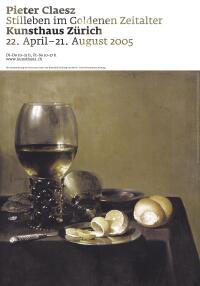
1/10
exhibition poster

2/10
exhibition view
Ausstellungsansichten Kunsthaus Zürich 2016–2022 © FBM Studio, Zürich
Ausstellungsansichten Kunsthaus Zürich 2016–2022 © FBM Studio, Zürich
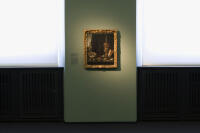
3/10
exhibition view
Ausstellungsansichten Kunsthaus Zürich 2016–2022 © FBM Studio, Zürich
Ausstellungsansichten Kunsthaus Zürich 2016–2022 © FBM Studio, Zürich

4/10
exhibition view
Ausstellungsansichten Kunsthaus Zürich 2016–2022 © FBM Studio, Zürich
Ausstellungsansichten Kunsthaus Zürich 2016–2022 © FBM Studio, Zürich
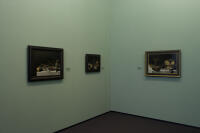
5/10
exhibition view
Ausstellungsansichten Kunsthaus Zürich 2016–2022 © FBM Studio, Zürich
Ausstellungsansichten Kunsthaus Zürich 2016–2022 © FBM Studio, Zürich
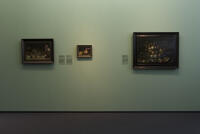
6/10
exhibition view
Ausstellungsansichten Kunsthaus Zürich 2016–2022 © FBM Studio, Zürich
Ausstellungsansichten Kunsthaus Zürich 2016–2022 © FBM Studio, Zürich
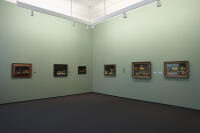
7/10
exhibition view
Ausstellungsansichten Kunsthaus Zürich 2016–2022 © FBM Studio, Zürich
Ausstellungsansichten Kunsthaus Zürich 2016–2022 © FBM Studio, Zürich

8/10
exhibition view
Ausstellungsansichten Kunsthaus Zürich 2016–2022 © FBM Studio, Zürich
Ausstellungsansichten Kunsthaus Zürich 2016–2022 © FBM Studio, Zürich

9/10
exhibition view
Ausstellungsansichten Kunsthaus Zürich 2016–2022 © FBM Studio, Zürich
Ausstellungsansichten Kunsthaus Zürich 2016–2022 © FBM Studio, Zürich
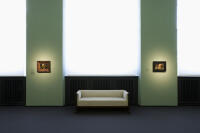
10/10
exhibition view
Ausstellungsansichten Kunsthaus Zürich 2016–2022 © FBM Studio, Zürich
Ausstellungsansichten Kunsthaus Zürich 2016–2022 © FBM Studio, Zürich
1/10